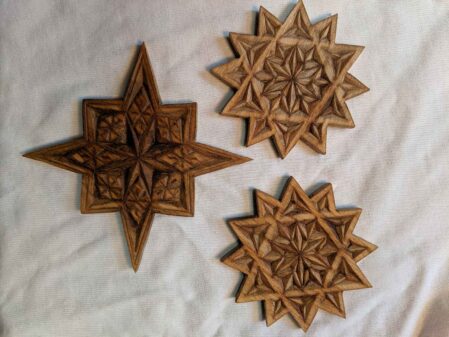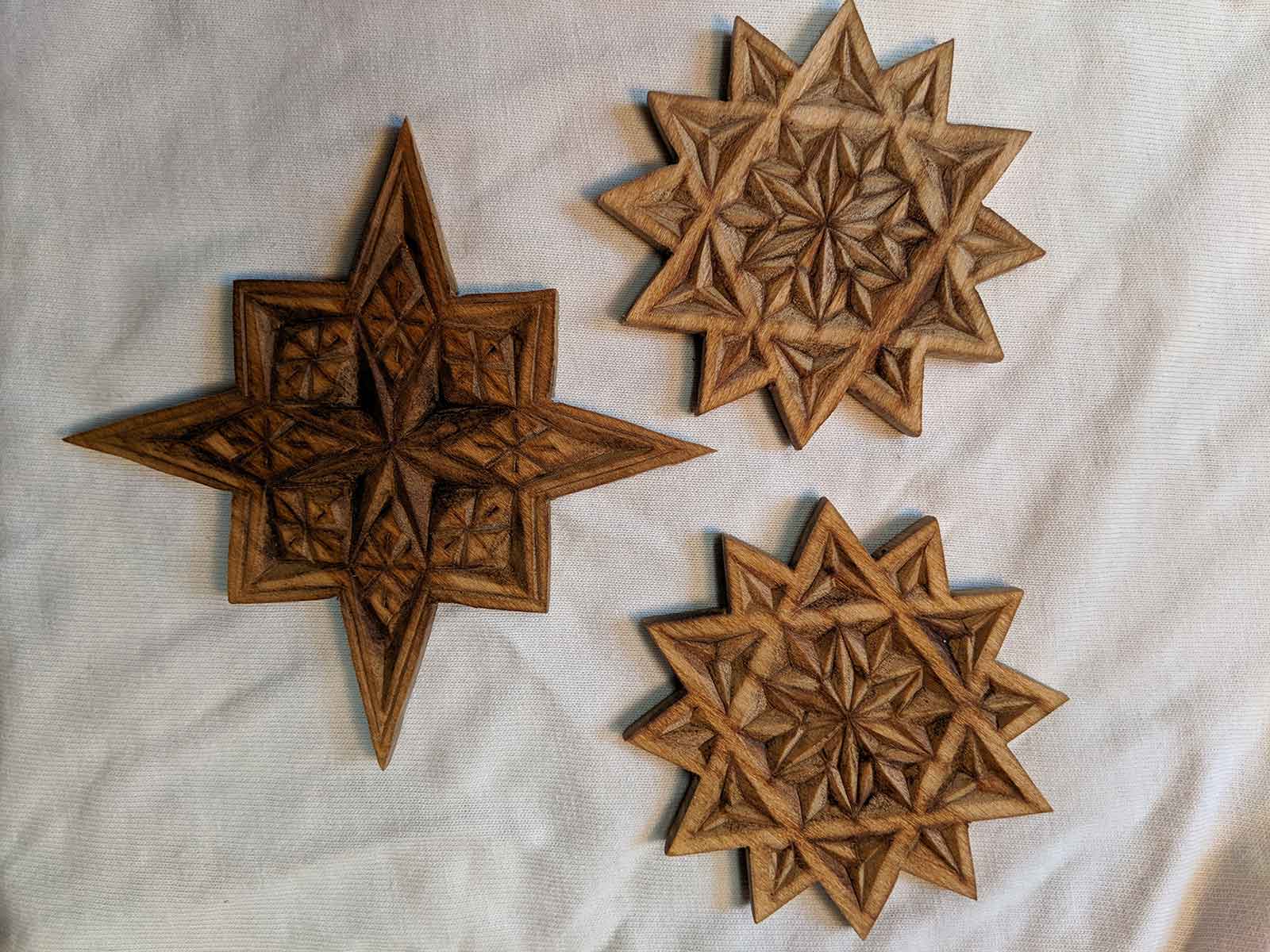Ed Ronningen, Coeur d’Alene, Idaho
Chip Carving is an international tradition, although Scandinavia has the preponderance of carvings. It is a centuries-old craft, used by many peoples worldwide to decorate wooden objects—spoons, bowls, boards, doorways, boats, paddles, and more. Chip carving uses special knives to remove small chips of wood from a surface, to create sharp edges and smooth facets. The prettiest thing about chip carving is “the shadows” that are created by the carvings. Usually, the surface is flat, but it can be curved, round, or in other shapes.
Chip carving is known as “Karveskurd” in Norwegian, and “Kerbschnitzen” in German. “Karveskurd” likely originated in Norway as early as people began to carve wooden objects. However, because wood is a natural material it decomposes, leaving no examples of early carvings. Objects from the 800-900’s are the earliest items that still exist. The Oseberg ship, dating prior to 834AD, has chip carving elements incorporated into the dragon figures.

Chip carving was brought to America and practiced by many Scandinavian immigrants through the late 1800s. The craft nearly died out in the early 1900s. Mr. Wayne Barton is recognized as the “father of chip carving” in modern America, and there has been a resurgence of the craft in the last 30-40 years.
Ed Ronningen’s grandparents emigrated to the US from Norway in 1919. When Ed retired in 2015, his wife said he needed a hobby, so he started chip carving. He is mostly self-taught and has progressed from simple items to creating several boxes, ornaments, earrings, pendants, trivets (hot pads), coasters, etc. Ed has entered items in the Sons of Norway District Conventions for judging and won first and third place awards on his very first submissions. He gives demonstrations on chip carving to the local Sons of Norway and Daughters of Norway lodges, at local craft fairs, and to other area groups. He will soon start giving lessons at a couple of local Sons of Norway lodges.


